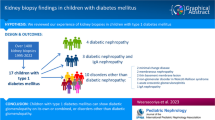Abstract
Diabetes mellitus has become a growing epidemic in the Asia-Pacific region. The aims of this study were to determine at autopsy the prevalence and characteristics of pathologic lesions in patients with diabetes mellitus. The 13,215 autopsy reports in our institution were examined for the diagnosis of diabetes mellitus. In patients with diabetes mellitus, the demographic data and the different pathologic lesions noted were analyzed. Diabetes mellitus was found in 820 patients (426 men and 394 women), comprising 6.2% of all autopsies. The two most common types of disease were cardiovascular diseases and infections, found in 69 and 53% of diabetic patients, respectively. Bacterial infection, in particular tuberculosis, was the most common type of infection noted. Localized and disseminated fungal infections were also common. In addition, urinary tract diseases were noted in 48%, hepatobiliary tract lesions in 42%, central nervous system disorders in 25%, and tumors in 29% of the diabetic patients. Malignant tumors were more often seen than benign tumors (18 vs 11% of patients, respectively). Many of the tumors were adenocarcinomas, and the most common neoplastic lesions were carcinomas of the lung, pancreas, liver, large intestine, stomach, and esophagus. Diabetic complications and associated diseases are common problems in this population. Adequate health care resources are needed for their prevention and treatment.
Similar content being viewed by others
References
King H, Aubert RE, Herman WH. Global burden of diabetes, 1995–2025: prevalence, numerical estimates, and projections. Diabetes Care 21:1414–1431, 1998.
Cockram CS. The epidemiology of diabetes mellitus in the Asia-Pacific region. Hong Kong Med J 6:43–52, 2000.
Andersson D, Svardsudd K. The value of death certification statistics in measuring mortality in persons with diabetes. Scand J Prim Health Care 12:114–120, 1994.
Eriksson L, Sundstrom C. Decreasing autopsy rate in Sweden reflects changing attitudes among clinicians. Qual Assur Health Care 5:319–323, 1993.
Goto Y, Suzuki K. Causes of death in Japanese diabetic patients examined by autopsy. Diabetes Res Clin Pract 24:S291-S294, 1994.
McLarty DG, Unwin N, Kitange HM, Alberti KG. Diabetes mellitus as a cause of death in sub-Saharan Africa: results of a community-based study in Tanzania. Diabet Med 13:990–994, 1996.
Phillips CB, Patel MS, Weeramanthri TS. High mortality from renal disease and infection in Aboriginal central Australians with diabetes. Aust J Public Health 19:482–486, 1995.
Mak KH. Number of notifications of infectious diseases. Public Health Epidemiol Bull Depart Health, Hong Kong 8:8, 1999.
Lam KY, Lo CY. A critical examination of adrenal tuberculosis and a 28-year autopsy experience of active tuberculosis. Clin Endocrinol 54:633–639, 2001.
Rees JR, Pinner RW, Hajjeh RA, Brandt ME, Reingold AL. The epidemiological features of invasive mycotic infections in the San Francisco Bay area, 1992–1993: results of population-based laboratory active surveillance. Clin Infect Dis 27:1138–1147, 1998.
Wu TT, Wang HC, Yang PC, Kuo SH, Luh KT. Pulmonary cryptococcosis: manifestations in the era of acquired immunodeficiency syndrome. J Formos Med Assoc 98:621–626, 1999.
De Biscop J, Mondie JM, Venries de la Guillaumie B, Peri G. Mucormycosis in an apparently normal host: case study and literature review. J Craniomaxillofac Surg 19:275–278, 1991.
Chetchotisakd P, Boonma P, Sookpranee M, Pairojkul C. Rhinocerebral mucormycosis: a report of eleven cases. Southeast Asian J Trop Med Public Health 22:268–273, 1991.
Wilkin A, Feinberg J. Pneumocystis carinii pneumonia: a clinical review. Am Fam Physician 60:1699–1714, 1999.
Assan R, Perronne C, Assan D, Chotard L, Mayaud C, Matheron S, Zucman D. Pentamidine-induced derangements of glucose homeostasis: determinant roles of renal failure and drug accumulation—a study of 128 patients. Diabetes Care 18:47–55, 1995.
Wideroff L, Gridley G, Mellemkjaer L, et al. Cancer incidence in a population-based cohort of patients hospitalized with diabetes mellitus in Denmark. J Natl Cancer Inst 89:1360–1365, 1997.
Kim YI. Diet, lifestyle, and colorectal cancer: is hyperinsulinemia the missing link? Nutr Rev 56:275–279, 1998.
Author information
Authors and Affiliations
Corresponding author
Rights and permissions
About this article
Cite this article
Lam, KY. Autopsy findings in diabetic patients: A 27-Yr clinicopathologic study with emphasis on opportunistic infections and cancers. Endocr Pathol 13, 39–45 (2002). https://doi.org/10.1385/EP:13:1:39
Issue Date:
DOI: https://doi.org/10.1385/EP:13:1:39




